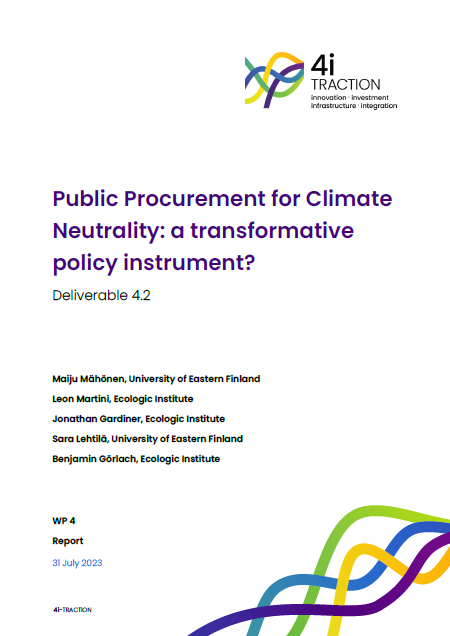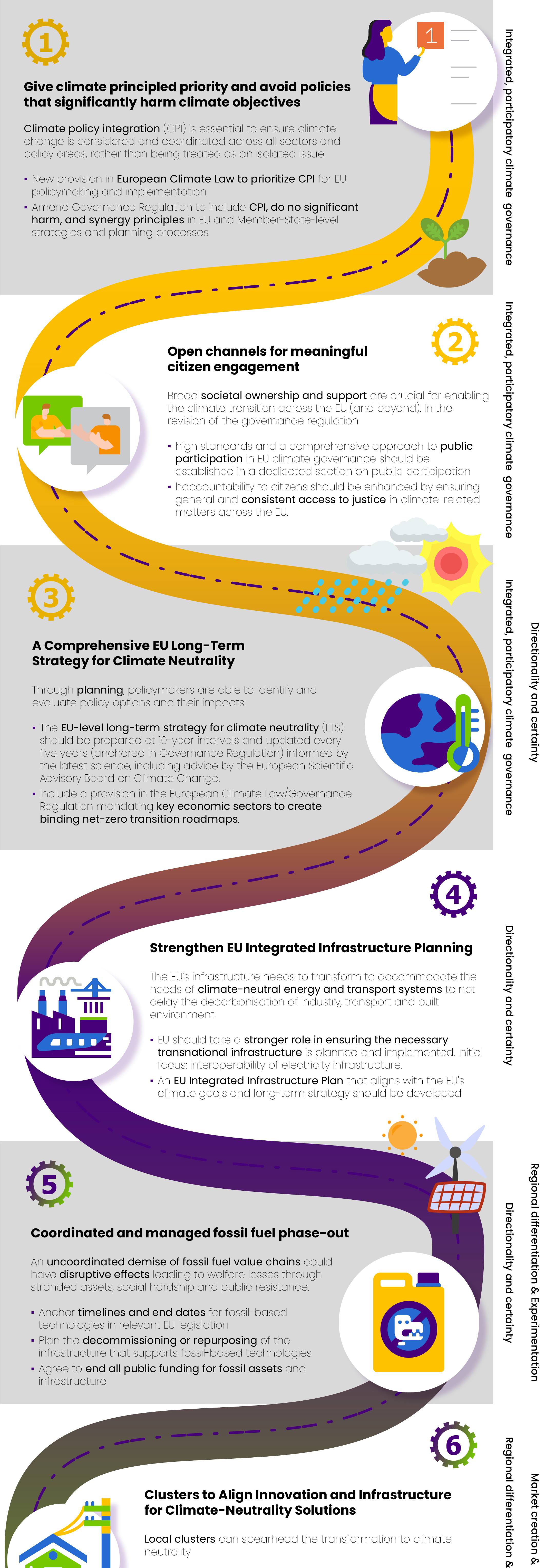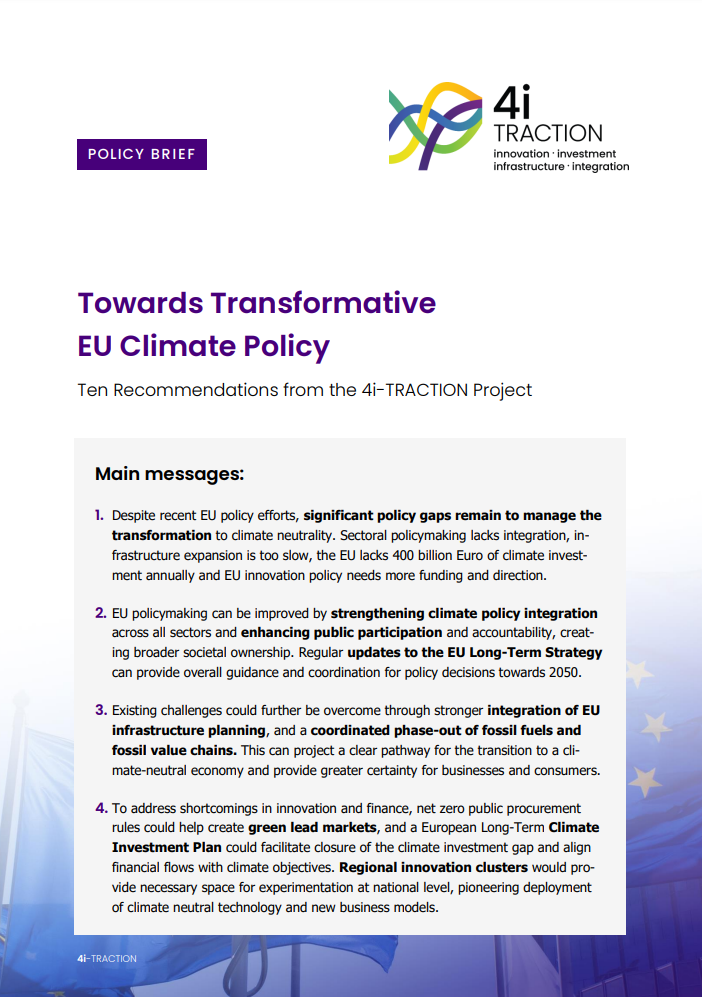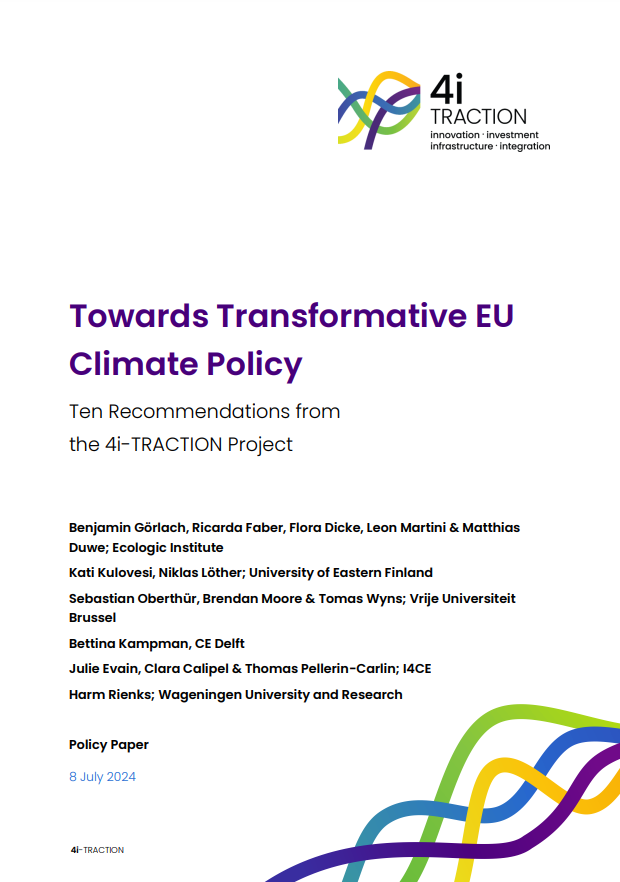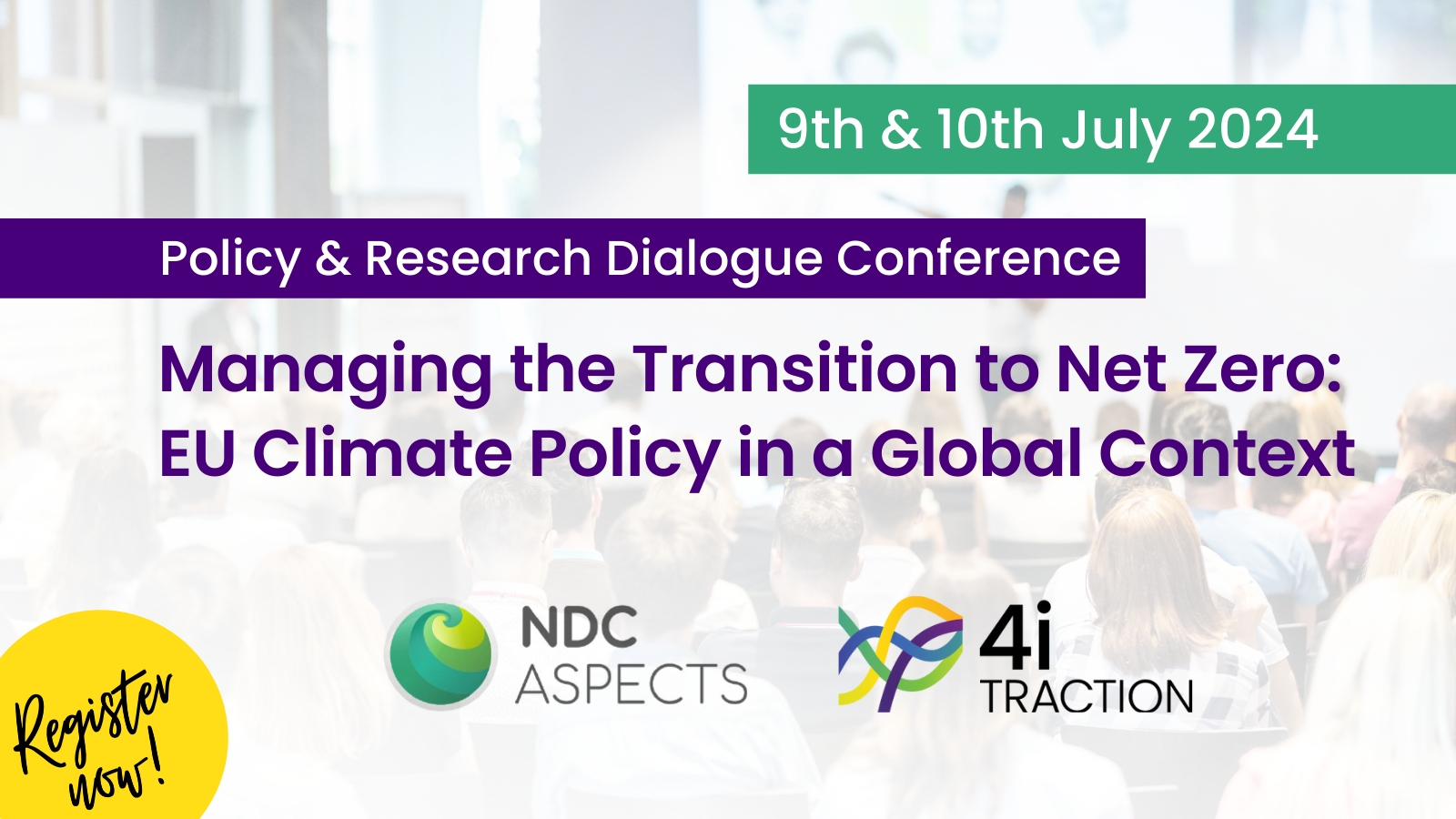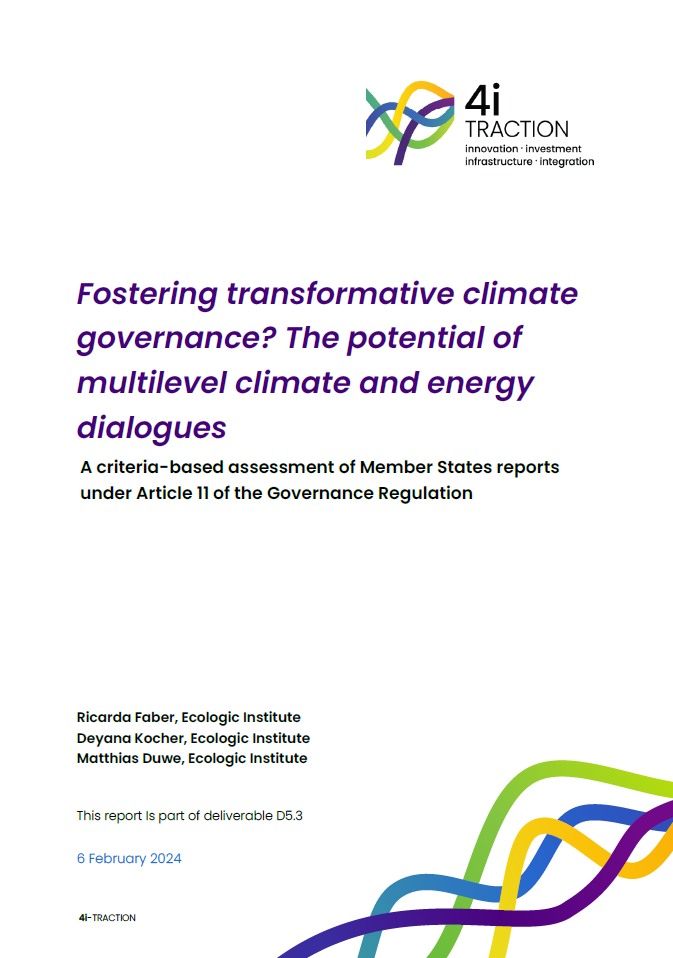Public Procurement for Climate Neutrality – a transformative policy instrument?
- Publication
- Citation
Mähönen, Maiju., Martini, Leon., Gardiner, Jonathan., Lehtilä, Sara., & Görlach, Benjamin (2023): Public Procurement for Climate Neutrality: a transformative policy instrument? D4.2: 4i-TRACTION case study report. University of Eastern Finland & Ecologic Institute, Berlin.
This report investigates how public procurement can be used as a strategic policy instrument to accelerate the transformation to climate neutrality.
Public procurement represents around 14% of the EU’s GDP and at least 11% of its emissions. Hence, these activities represent a major source where the public sector can influence the economy and its emissions. Currently, most public procurement contracts across the EU are awarded based on price alone, thus do not consider other criteria such as the environmental costs that occur over the project’s lifecycle. The EU acknowledges the need to reform procurement systems to align with climate goals, though uptake of Green Public Procurement (GPP) policies has been modest.
Structure of the report
To address these issues, this study carries out a qualitative and quantitative assessment of public procurement in the EU, focusing on how the tool can both reduce the government's own emissions footprint but also change production patterns and drive the transformation of the wider market. The report introduces the concept of "Public Procurement for Climate Neutrality" (PPCN), which aims to stimulate demand for, and hence investment and innovation, for low-emission goods and services.
The study argues why public procurement should play a role in the EU’s climate policy, presenting key figures and arguments showcasing the strategic potential of procurement for emissions reductions. Then, the report analyses how PPCN could be integrated in the EU’s current legislative framework, identifying different policy options and discussing their respective strengths and weaknesses. Next, the report provides an impact assessment of PPCN applied to basic materials in the construction sector. Lastly, policy recommendations are proposed.
Central results
The central finding of the report is that public procurement in the EU has untapped potential as a strategic instrument for climate action. It finds that public procurement is responsible for at least 11% of the EU’s GHG emissions, with the majority (81%) concentrated in four spending categories, where public procurers are responsible for at least a quarter of total emissions in each.
The strategic use of public procurement through PPCN integration can significantly drive emissions reductions and market transformation in the sectors where the government has considerable influence, such as construction. The study’s impact assessment for the building materials' industry reveals that PPCN implementation can reduce at least 21% and 18% of the EU’s cement and steel sector emissions, respectively. The analysis also demonstrates that the benefits of adopting PPCN for both cement and steel outweigh the direct (and short run) costs, even if only considering the climate benefits. Additionally, there are likely other economic advantages of PPCN, such as lead markets and job creation.
Key recommendations for policy
The report recommends the following actions for successful PPCN implementation in the EU:
- Introduce the concept of PPCN and incentivise procuring authorities to consider climate effects by publishing updated guidance on the strategic use of GPP and PPCN.
- Revise the EU Public Procurement Directives to facilitate wider adoption of GPP and PPCN, including environmental considerations, restricting price-only assessments, and an obligation for National GPP Action Plans.
- Introduce mandatory PPCN rules and product requirements through sector-specific legislation, targeting areas with strategic potential to create demand for low-emission products.
- Establish enabling conditions, such as a common methodology for environmental footprint calculations, enhanced capacity of procuring authorities, and clear implementation guidance.
